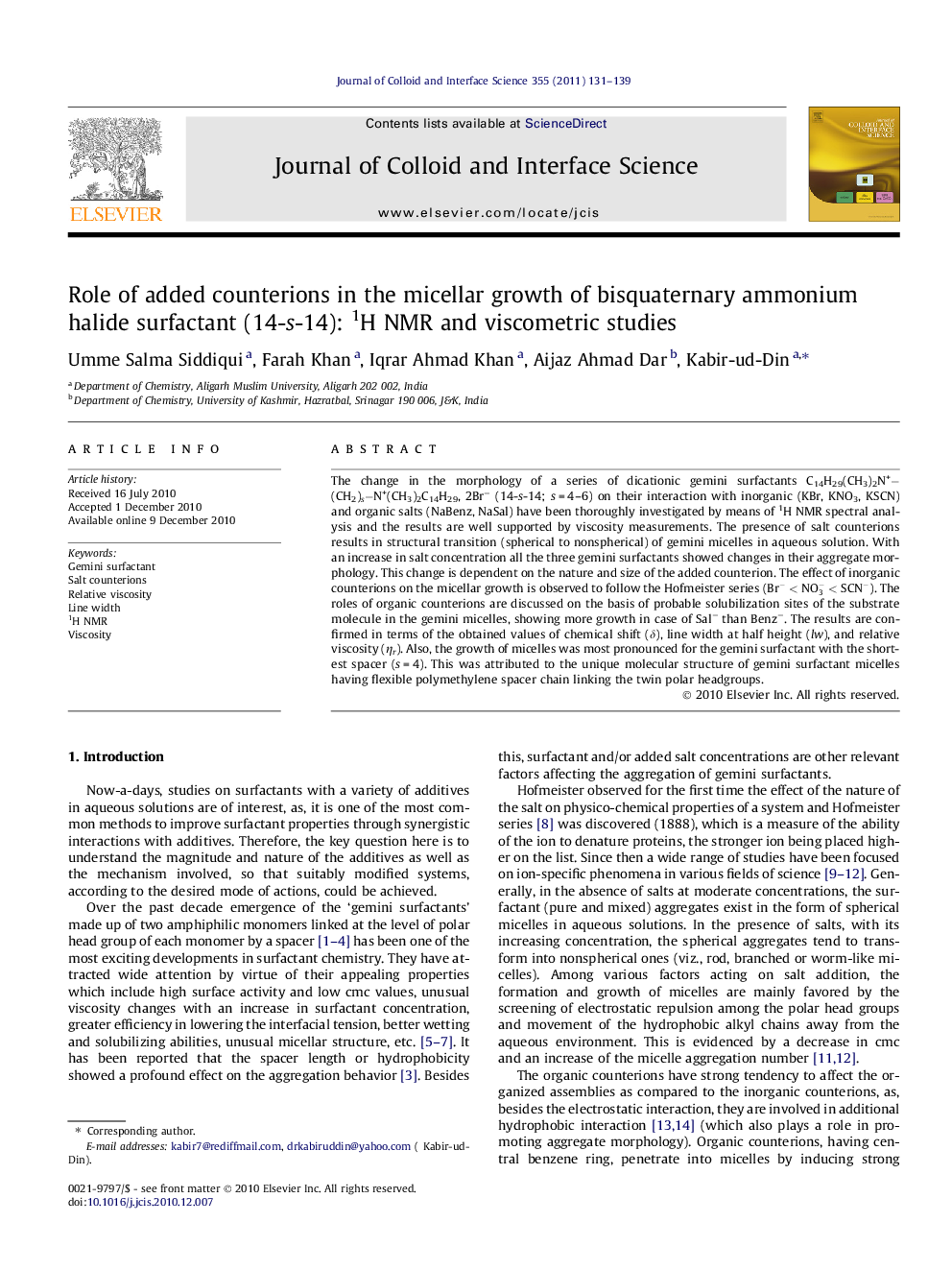| Article ID | Journal | Published Year | Pages | File Type |
|---|---|---|---|---|
| 608765 | Journal of Colloid and Interface Science | 2011 | 9 Pages |
The change in the morphology of a series of dicationic gemini surfactants C14H29(CH3)2N+−(CH2)s−N+(CH3)2C14H29, 2Br− (14-s-14; s = 4–6) on their interaction with inorganic (KBr, KNO3, KSCN) and organic salts (NaBenz, NaSal) have been thoroughly investigated by means of 1H NMR spectral analysis and the results are well supported by viscosity measurements. The presence of salt counterions results in structural transition (spherical to nonspherical) of gemini micelles in aqueous solution. With an increase in salt concentration all the three gemini surfactants showed changes in their aggregate morphology. This change is dependent on the nature and size of the added counterion. The effect of inorganic counterions on the micellar growth is observed to follow the Hofmeister series (Br- Graphical abstractRepresentative plots of line width at half height of the 1H NMR signal corresponding to the –N+CH3 group of geminis at 25 °C.Figure optionsDownload full-size imageDownload high-quality image (63 K)Download as PowerPoint slideResearch highlights► The interaction of salts (inorganic and organic) with cationic gemini micelles. ► Surfactant properties are improved through synergism when used in presence of additives. ► The magnitude and nature of salts as well as the mechanism involved are studied. ► The transition of different aggregate morphologies by addition of salts may be applied in the fields of natural sciences, surface chemistry, bioengineering.
